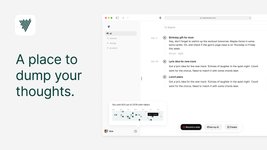Sublime
An inspiration engine for ideas
Record voice notes –– ideas, grocery lists, health logs, book highlights, anything.
Voicenotesvoicenotes.com
Note Taking
Clara Nafria and • 20 cards
Note Taking
Abe • 13 cards
1. Fleeting notes, which are only reminders of information, can be written in any kind of way and will end up in the trash within a day or two.
Sönke Ahrens • How to Take Smart Notes: One Simple Technique to Boost Writing, Learning and Thinking – for Students, Academics and Nonfiction Book Writers
Writing these notes is also not the main work. Thinking is. Reading is. Understanding and coming up with ideas is. And this is how it is supposed to be. The notes are just the tangible outcome of it. All you have to do is to have a pen in your hand while you are doing what you are doing anyway (or a keyboard under your fingers). Writing notes accom
... See moreSönke Ahrens • How to Take Smart Notes: One Simple Technique to Boost Writing, Learning and Thinking
3. Project notes, which are only relevant to one particular project. They are kept within a project-specific folder and can be discarded or archived after the project is finished.
Sönke Ahrens • How to Take Smart Notes: One Simple Technique to Boost Writing, Learning and Thinking – for Students, Academics and Nonfiction Book Writers
The Notecard System: Capture, Organize, and Use Everything You Read, Watch, and Listen To
Billy Oppenheimerbillyoppenheimer.com
The bigger issue, though, is what I have come to think of as note-taking’s camera roll problem: no matter how well they organize themselves, most notes are still doomed to be forgotten. When it came to pictures, Timehop and later Google Photos addressed this problem by making an effort to resurface old photos in a variety of ways: on the anniversar... See more
Casey Newton • Notes on a year using Roam Research
Pmarchive · Pmarca Guide to Personal Productivity
fictivekin.github.io